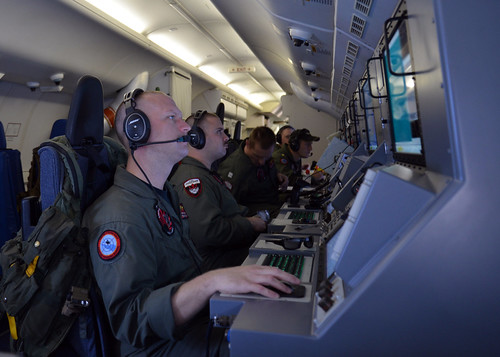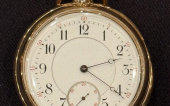
Recovering the black boxes from the Malaysia Airlines jet that crashed into the southern Indian Ocean is a Herculean task, even with the wealth of sophisticated equipment being deployed.
Any hope of finding survivors from the missing plane was extinguished on Monday when Malaysia's prime minister announced satellite data showed MH370's journey had "ended in the southern Indian Ocean" off the west coast of Australia.
Seventeen days after the Boeing 777 disappeared, distraught relatives were forced to accept what they had long feared -- that the 239 passengers and crew on board were never coming home.
The plane's two black boxes are key to solving the mystery of why the plane veered so far off course and its final fate, but experts say that the search for them will be long and difficult.
In theory, the black boxes containing flight data and cockpit voice recordings will continue emitting tracking signals for about another two weeks, with an average audible range of two to three kilometres (nearly two miles).
But with no debris in the remote search area confirmed as linked to the plane, it is still a case of looking for a needle in a haystack.
"Picking up a signal from the beacon seems an outside chance," said a member of the team that hunted the black boxes from Air France flight AF447 that crashed in the Atlantic in 2009.
- Vast search zone -
The investigator, who asked to remain anonymous, noted that in the Air France case the signals were not heard at all. One transmitter had failed and the other had fallen off on impact and was never found, he said.
"So I'm fairly pessimistic about this approach," he said, recommending that the immediate priority should be to catalogue every piece of debris that is discovered.
Then, ideally, data buoys should be deployed," he said. These instruments, commonly used for meteorological data, are tracked by satellite and give an idea of ocean currents in the area to help confirm mathematical models.
But he warned that the 17 days that have elapsed since the crash and the "uncertainty associated with these models will combine to make the search zone quite vast".
Commercial airliners are obliged to carry two black boxes -- the Digital Flight Data Recorder which logs the speed, altitude and direction, while the Cockpit Voice Recorder keeps track of cockpit conversations and other sounds and announcements.
Even before the official announcement that the plane had crashed, the US navy said it was flying a black box locator to Perth. The Pinger Locator, weighing 35 kilogrammes (80 pounds), is attached to a cable and towed by a ship.
It is equipped with a listening device that can detect the signals of a black box at a depth of up to 6,000 metres (20,000 feet).
- Scouring the sea floor -
If a signal is not picked up, the next stage would be to deploy lateral scanning sonars after determining the variations of the sea floor to pick up any anomalies.
All the experts who spoke to AFP believed the search operation could last a very long time -- months or more.
In the Air France crash it took 23 months to locate the main wreckage and retrieve the black boxes at a depth of 3,900 metres.
"An underwater phase to try to locate the plane from flight MH370 can only be started if the activity under way allows us to define a search zone more limited than the current search zone," France's air accident investigation bureau (BEA) said Monday.
Once such a zone is set, if it is over a flat and sedimentary seabed, investigators can use "towed sonars and get a good coverage".
If, however, the zone is over a broken, irregular seabed, they could call in the Remus submarine drones used for the Air France search plane.
Remote operating vehicles (ROVs) could also be used in a later stage to check topographical anomalies with high-definition cameras.
"These remote-controlled robots, which have a cable linking them to the surface, move forward slowly and thus have a more reliable coverage," said the investigator, who was formerly with the BEA.
"But there as well, a very precise position is needed to use them at depth."
And even if the black boxes are found, there are no guarantees they will be in a state to give up their data.
The Malaysian authorities have said a deliberate act made MH370 disappear from civilian air control radars -- and the big question is whether the Cockpit Voice Recorder was immobilised.
"You only need to pull the breaker that is by the pilot's seat and it is taken off-line electrically," explained one aviation expert.
MH370's disappearance has prompted a major debate over inflight communications, including the benefits of live streaming black box data.
afp, photo by #Pacom







































